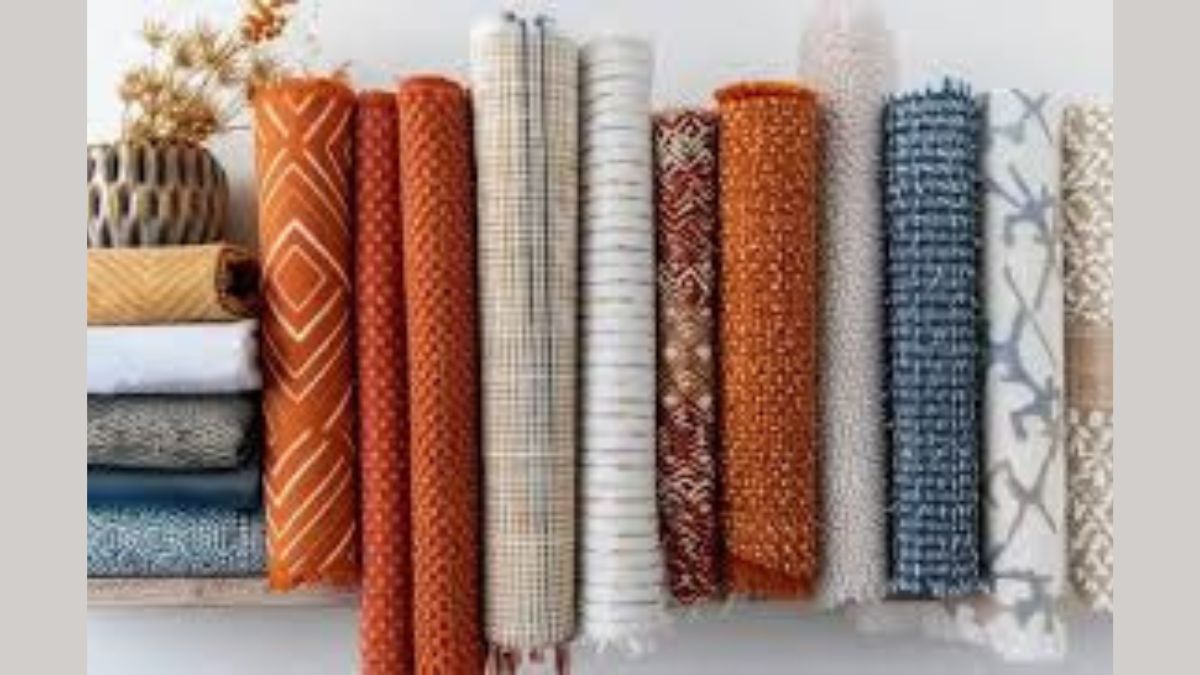Home
Why Military Names Resonate: History, Traditions, and Modern Influence

The Enduring Heritage of Military Names
diversity divisions, or national heroes who represented courage, determination, and the spirit of unity. Their legacy isn’t just written in textbooks or carved into marble monuments but carried forward by serving members who inherit this powerful tradition. It is not uncommon to feel a sense of awe simply by seeing a name etched on a set of armed forces name plates, for these are more than identifiers—they are daily reminders of honor and shared commitment.
This living connection to the past influences morale and camaraderie within units. Service members often strive to live up to the standard set by the names they wear, fostering an unspoken bond across generations. These names form an invisible thread, linking the past, present, and future. Studies on military history suggest that changes in military names often mirror shifts in culture, politics, and societal values. The evolution of military names commemorates historical achievements and strengthens a shared sense of identity among those who serve.
Traditions and Symbolism Behind Military Naming
Ritual and tradition play a major role in the naming conventions across all branches of the military. Ships, bases, and regiments are often named with great care, selected to reflect values such as bravery, honor, and service, or to honor commanders and noteworthy battles. Seeing names like USS Lincoln or Camp Valor isn’t accidental—these choices are deliberate, made to inspire and preserve values that define service itself.
Naming ceremonies are an integral part of military tradition. During these events, the significance behind each name is shared, often recounting acts of heroism or notable historic milestones. This storytelling aspect ensures that new members understand the expectations and heritage that come with their assignment. As a result, the entire unit is pulled together under a banner of shared pride and purpose. These rituals, built on centuries of history, continue to foster respect for the institution and for the broader traditions of military service.
Military Naming Practices Across the World
Around the globe, every military takes a unique approach to names and naming conventions, but all share a common purpose: to foster pride, unity, and remembrance. The Royal Navy in the United Kingdom, for example, chooses ship names that often draw from royal lineage and the nation’s storied maritime history. In contrast, the U.S. military names bases and vessels after heroes, battles, or even states—a nod to a broader national heritage.
In other cultures, like Japan’s Self-Defense Forces, ship and unit names lean heavily on elements of nature, such as winds, mountains, and rivers, emphasizing harmony and resilience. Germany’s armed forces have historically used regiment names that evoke pride in regional or cultural accomplishments. This global patchwork illustrates how naming conventions, though varied in form, serve similar purposes—building unity, reflecting cultural values, and preserving memory.
Cultural Impact: Military Names in Modern Society
The influence of military names extends far beyond the parade grounds or a soldier’s uniform. These names are woven into the fabric of our cities, families, and even our recreational activities. It’s not uncommon for children to be named after grandparents who served or after historic victories that inspire hope and tenacity. In many cities, streets and public parks are named for local veterans, helping to keep memories alive and promote civic pride.
Even the world of sports borrows military-themed names for teams, mascots, and traditions, mixing the ideals of teamwork and resilience with athletic competition. Social researchers have found that this broader integration of military names into daily life helps build bridges between civilian and military communities. These shared names and symbols foster understanding, honoring those who have served while bringing their values into the mainstream of everyday culture.
Military Names in Media and the Arts
Every time a film, book, or television show introduces a character with a military name or rank, it invokes a world of meaning. Directors and writers use these names to add complexity to their characters, signaling leadership, sacrifice, and gravitas before a word of dialogue is spoken. Iconic roles like Captain Miller in “Saving Private Ryan” or Admiral Adama in “Battlestar Galactica” show how a carefully chosen name amplifies the sense of realism and authenticity within the narrative.
The arts also find subtle ways to pay homage to those who serve. Whether in historical novels, graphic novels, or award-winning dramas, military names connote discipline and tradition. This cultural representation ensures that the values and sacrifices associated with military life are remembered and respected even by those far removed from service themselves. Such creative choices help keep the stories—and the significance—of these names alive in the wider public imagination.
Personal Stories: The Meaning of a Military Name
For countless service members and their families, military names carry deep, often personal meaning. Many families pass down service-related names across generations, creating an unbroken line of tradition and encouragement. Carrying a relative’s name—perhaps a decorated great-grandparent or a beloved uncle—is often seen not just as an honor, but as a living bond with those who made sacrifices for their country.
When listening to veterans’ stories or reading their accounts, one theme is common: a sense of pride and responsibility that comes with bearing a military name. News and reflections found on defense-focused platforms are full of such examples, showing how these names offer comfort and resilience during tough deployments, transitions, or moments of remembrance. They serve as a source of inspiration, creating an enduring support system that extends beyond the battlefield or base.
Future Trends in Military Naming Conventions
As society evolves, so too do the names chosen within the military. Today’s naming conventions increasingly reflect a broader, more inclusive understanding of service. Efforts are underway across many branches to ensure that the contributions of women, minorities, and previously underrepresented groups are acknowledged in the names given to units, vessels, and more.
These changes not only promote diversity and inclusiveness but also keep military naming relevant in a changing world. Future generations will look to these names and see themselves reflected in the military’s history and ongoing mission. The evolution of naming standards is a testament to the living nature of military tradition—a tradition that adapts while still honoring the foundational ideas of duty, sacrifice, and unity.
Home
Maintaining Your Knife Edge Between Sharpening Sessions

Understanding the Difference Between Honing and Sharpening
Many home cooks muddle the distinction between honing and sharpening, but grasping this difference is vital for maintaining your blades efficiently. Sharpening focuses on grinding steel away to form a new, keen edge, typically performed with whetstones, guided systems, or electric sharpeners. In contrast, honing works by realigning the existing edge and correcting any microscopic bends or folds in the steel without noticeably removing material. Regular honing ensures your knives stay effective for longer stretches, helping you postpone the need for a full sharpening service. If you’re unsure whether your knives need sharpening or just a tune-up, a quick mobile knife sharpening assessment can save you from unnecessary wear on your favorite blades.
Establishing a regular maintenance habit protects your knives, preserves the edge, and boosts both safety and performance during meal prep. With proper care, sharp knives require less effort, making each cut cleaner and more precise while reducing the chance of accidents often caused by struggling with a dull blade. This proactive approach is a foundational skill for anyone aiming to maximize the lifespan and effectiveness of their kitchen tools.
Essential Tools for Edge Maintenance
Integrating the right maintenance tools into your kitchen routine allows you to keep your knife edges razor-sharp for daily use. Here are the must-have maintenance tools for edge retention:
- Honing Rods: Commonly steel or ceramic, honing rods should match your knife’s steel hardness. Ceramic rods are preferred for harder, high-carbon knives, while steel works best for softer blades.
- Leather Strops: Used with or without a polishing compound, stropping further straightens and polishes the edge, imparting a refined sharpness ideal for finishing maintenance after honing.
- Fine-Grit Whetstones: While coarse stones are best for reshaping or repairing, fine-grit stones (3000 and up) are useful for minor touch-ups or blending after honing and stropping sessions.
Developing familiarity with these maintenance tools is crucial for extending the life of your knives and ensuring a seamless cooking experience.
Proper Honing Techniques
Honing is all about technique—correctly preventing unintentional blade damage and maintaining your edge for the long haul. Here’s how to hone like a professional:
- Angle Maintenance: Hold your knife at an angle matching the blade’s original grind—typically 15 to 20 degrees. A consistent angle ensures efficient edge realignment.
- Even Strokes: Glide the blade heel to tip along the rod in smooth, even motions, alternating sides with each pass. This symmetrical approach prevents the edge from becoming misaligned or one-sided.
- Regularity: Incorporate honing before or after every use, depending on how frequently you cook or the hardness of your knife steel. Just a few passes are sufficient for most maintenance situations.
Avoid excess pressure; gentle strokes are more effective and safer. Incorrect honing techniques can gradually round off the edge rather than keep it razor-sharp.
Choosing the Right Cutting Surface
The surface beneath your knife’s edge is just as important as the care you provide. Hard materials like glass, granite, or ceramic can dull your knife rapidly or even chip fine edges—these should always be avoided. Instead, opt for:
- End-Grain Wooden Boards: These provide a forgiving, self-healing surface that absorbs the impact of each cut, sparing the edge from direct shock.
- High-Quality Synthetic Boards: Professional-grade plastic boards are ideal for hygiene and are gentle enough to help preserve sharpness.
Regular board maintenance is also key—keep boards clean and flat. Deep grooves can damage your knife and harbor bacteria, so replace or resurface worn-out boards as needed for optimal results.
Proper Cleaning and Storage
Routine cleaning and proper storage habits are vital to prevent corrosion, edge damage, and premature dulling. Always wash your knives with warm water and a touch of mild detergent, avoiding the dishwasher, where harsh detergents and jostling can ruin blades. Immediately dry with a soft towel to prevent rust formation on higher-carbon steels.
Store knives securely in a dedicated knife block, on a magnetic wall strip, or in protective sheaths to keep the edge from knocking against hard surfaces or other utensils. Never unprotected, toss your knives into a drawer, which leads to nicks and unwanted dulling.
When to Seek Professional Sharpening
Even with diligent maintenance, knives eventually require professional sharpening. Signs that it’s time include blades that drag or crush food rather than slicing and edges that honing or stropping can no longer revive. Experienced service providers will use advanced methods like guided sharpening systems or professional whetstones to restore the original bevel, maximizing longevity and cutting performance.
Common Mistakes to Avoid
- Over-Honing: Excessive honing can lead to steel fatigue or over-thinning, especially on softer or fine-edged blades. Hone only when performance drops, not after every single use unless needed.
- Incorrect Angles: Maintaining the wrong angle can inadvertently dull or damage your edge. Practice and consistency are key; consider guided devices if you’re starting out.
- Improper Storage: Avoid leaving knives loose in drawers or wet in sinks—this is the quickest way to damage the blade and handle. Invest in proper storage to maintain your knives’ performance.
Final Thoughts
Maintaining your knife’s edge between sharpening sessions combines routine care, the right tools, and mindful technique. Regular honing, avoiding harsh cutting surfaces, keeping knives clean and dry, and storing them properly will extend the sharpness and lifespan of your kitchen blades. Mastering these practices ensures your knives remain safe, efficient, and pleasurable, elevating every culinary task.
Home
How Fabric Quality Affects the Comfort and Durability of Men’s Briefs

The type of fabric used in men’s briefs plays a crucial role in determining their comfort and longevity. High-quality materials ensure breathability, softness, and proper moisture control—essential features for all-day wear. On the other hand, poor-quality fabrics can cause discomfort, chafing, and premature wear, reducing the overall performance and value of the garment. Understanding fabric quality enables consumers to make informed choices that support both comfort and durability.
When it comes to reliable options, brands like Stanfield’s underwear Canada highlight the importance of using premium fabrics that stand up to daily use. Investing in well-crafted briefs made from high-grade cotton, modal, or microfiber can enhance both fit and feel, as well as resilience. Ultimately, the right fabric doesn’t just improve comfort—it extends the life and satisfaction of every pair.
Natural Fibers: Pros and Cons
Cotton is a popular option for men’s underwear because of its breathability, softness, and hypoallergenic properties, ideal for sensitive skin and all-day comfort. However, it absorbs moisture, may lose shape, and can wear out with time. Natural fibers like bamboo are eco-friendly, gentle, and naturally antimicrobial, providing good breathability and hypoallergenic benefits. On the downside, bamboo is usually more costly and less durable if not properly processed.
Modal and Bamboo: Modern Solutions
Modal fabric, derived from beech tree pulp, has a silky texture and excellent moisture-wicking properties, surpassing cotton in absorbency. It resists shrinkage and pilling, making it ideal for men who want cool, comfortable wear—especially in hot weather or during active routines. Nonetheless, it may be less durable than some synthetic fabrics when exposed to high heat or rough handling. Bamboo fabric offers natural temperature control, keeping briefs comfortable and dry. As a fast-growing, sustainable crop, bamboo’s initial softness is attractive; however, selecting well-made bamboo textiles ensures better durability.
Synthetic Fabrics and Blends
Synthetic materials such as polyester and nylon are durable, quick-drying, lightweight, and retain their shape, making them ideal for athletes. However, they tend to lack breathability and softness, which can reduce comfort for everyday wear or those prone to chafing. Blended fabrics, such as cotton-polyester, combine the softness of cotton with the durability and moisture-wicking properties of synthetics, offering a balanced mix of comfort and functionality.
Weave, Stretch, and Construction
The fabric weave influences breathability, softness, and overall comfort. Tighter weaves tend to be smoother, decreasing friction and providing a better fit, whereas looser weaves allow for increased airflow. Most briefs incorporate elastane (also known as spandex) to offer stretch, maintain shape, and ensure durability. Additional features such as reinforced seams, gusset panels, and tagless designs contribute to the underwear’s longevity. High-quality stitching and thoughtful design choices help extend the lifespan, making premium underwear a valuable investment.
How to Choose the Best Fabric for You
The best fabric for men’s briefs depends on your lifestyle, skin sensitivity, and how and when you plan to wear them. If softness and breathability are your top priorities, pure cotton or bamboo is usually the ideal choice. For those who require consistent performance for travel, sports, or extended periods, synthetics and blends may be the superior choice. Always look for breathable weaves, thoughtful design details, and a touch of stretch for optimal comfort and a perfect fit.
Conclusion
Understanding how fabric choices influence comfort and durability empowers men to make more informed decisions about their underwear. Balancing softness, dryness, breathability, and longevity allows you to choose briefs that suit both your lifestyle and skin. Whether you opt for all-natural fibers, advanced synthetics, or a well-crafted blend, investing in quality pays off with lasting comfort and satisfaction.
Home
Bail Bonds and the American Justice System: Myths, Realities, and Everyday Scenarios

The American justice system relies on the bail bond system as a central component to balance the presumption of innocence with the need for public safety and judicial efficiency. Despite its importance, significant misunderstandings persist, often leaving individuals confused when they or a loved one encounter the bail process. Educating yourself on bail bonds is vital, and working with a trusted bail bond agency can make a crucial difference in dealing with the challenges that arise.
Bail allows temporary release from jail during legal proceedings, but not everyone can afford the upfront costs. Bail bond agents fill a crucial financial gap, preventing people from remaining behind bars due to lack of funds. By dispelling myths and providing real examples, individuals and families can better understand the legal system. This article explains how bail bonds work, debunks common myths, and shows how the process affects lives daily. It covers defendants’ responsibilities and ongoing reforms, offering practical knowledge for urgent or long-term advocacy. Whether supporting someone facing charges, navigating the justice system, or exploring alternatives to traditional bail, this guide offers clear, practical advice based on real experience and legal facts.
Understanding Bail Bonds
Bail is a financial promise to the court that a defendant will return for hearings, set by a judge based on the crime, record, flight risk, and safety. When unaffordable, a bond agent can pay the bail for a fee (10-15%), posting the bond for release until trial. If the defendant attends court, the bond is dissolved; if not, the agency may seek to recover the amount or find the defendant.
Real-Life Scenarios
A single parent accused of a minor, non-violent crime, unable to pay bail, risks missing work, losing their job, and being separated from their children until court. Bail bonds allow them to pay a small fee for release, so they can return to family and work while waiting for trial. Similarly, bail bonds help individuals with medical needs, preventing health decline from prolonged incarceration. These cases illustrate the importance of understanding bail and procedures for millions of Americans. Pretrial jail time disrupts families, jobs, and communities, even for those not yet convicted.
The Role of Bail Bond Agents
Bail bond agents act as intermediaries between the court and defendants, posting bail for those unable to afford it. They assume financial risk and ensure court compliance, guiding clients through the process. Besides providing upfront capital, they answer legal questions and support clients during stressful times, helping expedite release and reduce the negative impacts of jail on lives and reputations.
Legal Rights and Responsibilities
Anyone accused of a crime has the right to know the charges and bail amount. After release on a bail bond, defendants must attend all hearings and follow court conditions, such as check-ins or travel restrictions. Failing to do so can result in bond forfeiture and warrants. Defendants also have the right to legal representation and timely notice of case updates. Lawyers should inform their clients when using a bail bond agent to ensure responsibilities are clear and protect their interests.
Alternatives to Traditional Bail
Recognizing that the current system burdens low-income people, some places are using alternatives like pretrial supervision, electronic monitoring, and own recognizance releases. These aim to ensure court appearances without high upfront costs. Cities like New Jersey and Washington, D.C., have seen positive results, with improved court compliance and lower jail populations. These reforms haven’t increased crime or missed court dates, challenging old beliefs about safety and bail. Understanding these options helps individuals promote fairer bail approaches and justice-focused reforms.
Conclusion
The bail bond system remains a crucial but complex part of America’s legal landscape. By dispelling myths, highlighting real-world consequences, and explaining the roles and obligations involved, people can approach the process educated and empowered. Contentious debates continue about guaranteeing freedom and public safety before trial. Still, knowledge remains key to making smart, humane decisions—for yourself, your loved ones, and your community.
-

 GENERAL10 months ago
GENERAL10 months agoFrom Fan Art to Original Works: The Diversity of doujindesu Creations
-

 Entertainment6 months ago
Entertainment6 months agoEnchantment & Excitement: Crafting Unforgettable Event Experiences
-

 GENERAL8 months ago
GENERAL8 months agoEngland Business Visa Requirements for American and International Citizens in 2025: A Guide for Entrepreneurs
-

 GENERAL6 months ago
GENERAL6 months agoCrossword Conundrum: The Significance of vault opener nyt crossword
-

 GENERAL9 months ago
GENERAL9 months agoLatest Trends in Men’s and Women’s Jackets for the Upcoming Season
-

 GENERAL6 months ago
GENERAL6 months agoExploring the World of nhentai.nef: A Comprehensive Guide for New Users
-

 Health10 months ago
Health10 months agoDiscovering gel ooru: The Ultimate Guide to This Unique Traditional Craft
-

 GENERAL11 months ago
GENERAL11 months agoWhy raterpoint is Revolutionizing Customer Feedback
